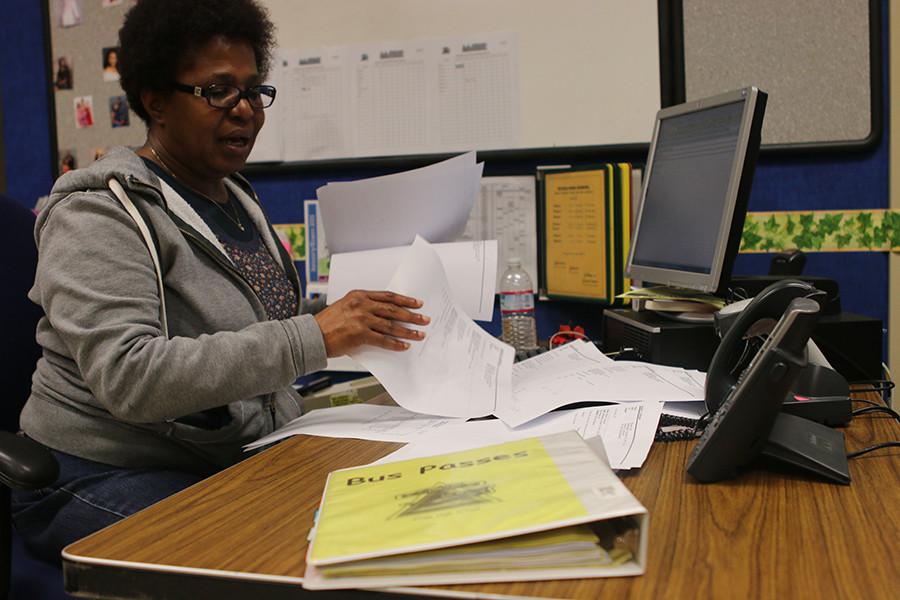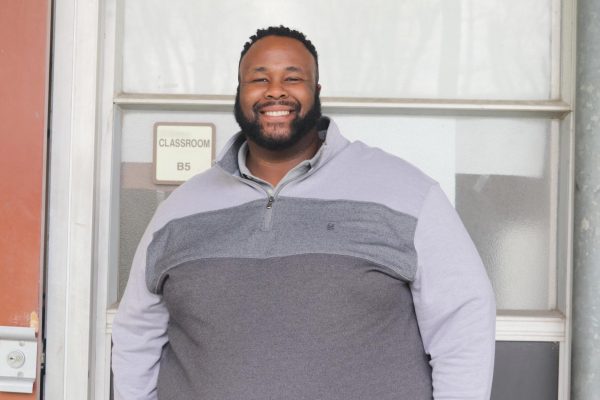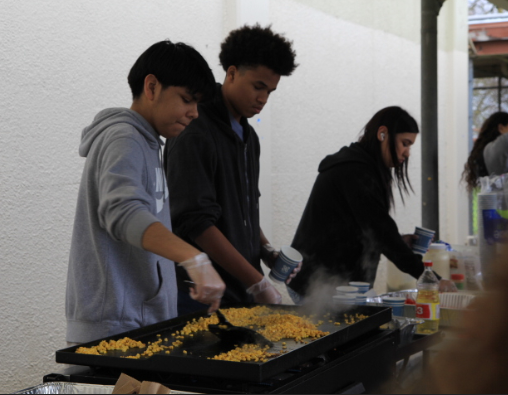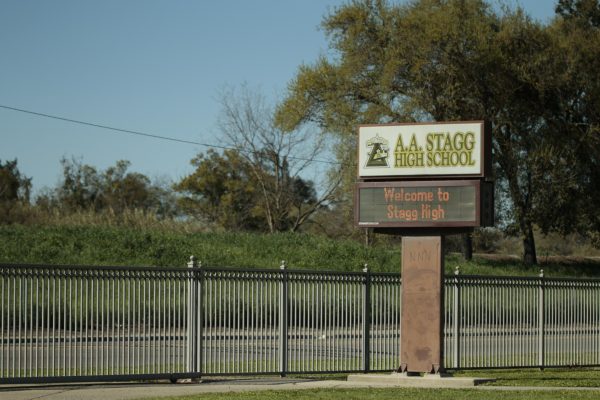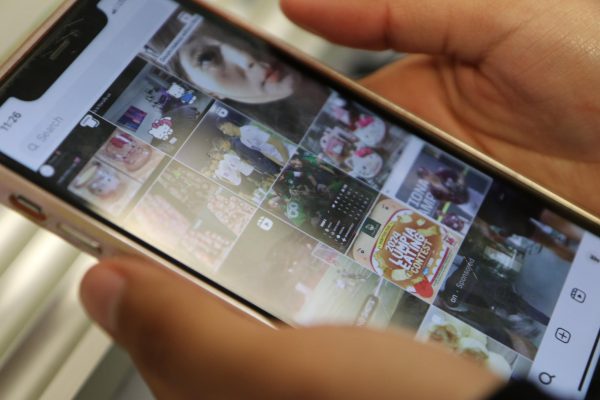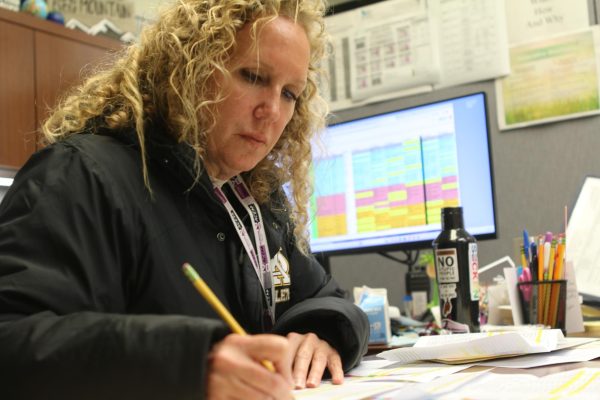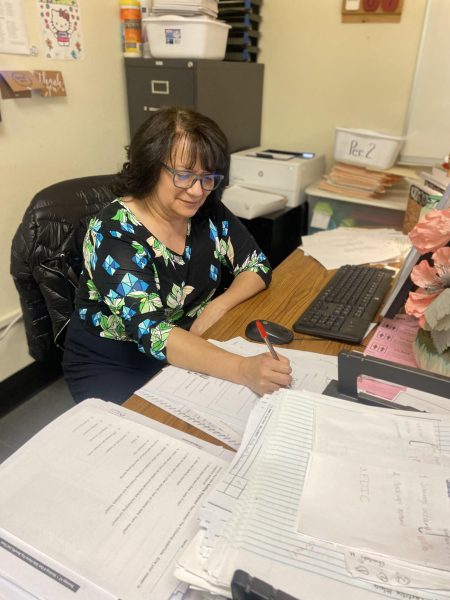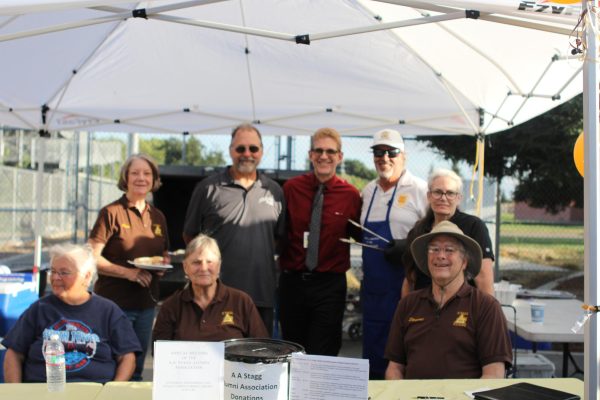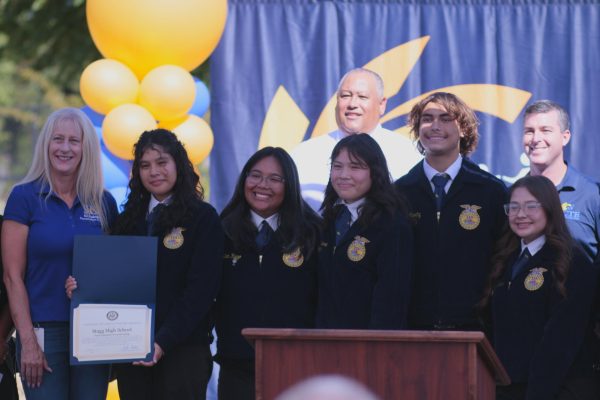3.11 problems and a bus pass is one
District regulations make it difficult for some to get to school
Sandra Johnson, the textbook clerk, goes through the many emails she has received from district transportation of students that don’t qualify for a free bus pass while the binder contains those who do.
One-fifth of a mile, approximately the distance of three football fields, is all it took to disqualify senior Maria Kun from getting a bus pass provided by the district. Every day she asks friends for rides to and from school. Unsure of when they will tell her they don’t have the gas or the time, Kun relies on hope that she will have a ride for the day. The extension of the distance boundary to receive free transportation has left some students trudging behind buses to get to school.
Annett Ferreyra, a specialist from the district transportation office, confirmed that the distance has always been 3.1. “The radius is decided by where the students live,” she said.
However, when Sandra Johnson, textbook assistant and head of bus pass distribution, first started handing bus passes out several years ago, the distance limit was about 2.5 miles. The distance last year was 3.1 miles, and this year it is 3.11.
Back in 2005, students were able to walk to neighborhood bus stops to catch a free ride to school. Now, after the $1.5 million cost switch from Stockton Unified School District buses to Regional Transit District city lines, students are being asked to walk hundreds of feet to pay fare for a bus they simply can’t afford.
Johnson sympathizes with those who come in but don’t qualify. She used to walk from her house to school everyday. “It’s about a mile and a half away,” she said, “so it didn’t take that long.” She estimates it took 15 minutes. However, she said, “All I can do is what the district tells me to do.” She admits that she wouldn’t want to walk three miles each way.
Kun, who lives 3.09 miles away, cannot be accommodated for a pass because she is within the limit. “I was basically told I needed to live at my neighbor’s house to get a bus pass,” she said.
Principal Andre Phillips said he used to get extra passes sent over three years ago to use at his discretion. “There are kids that really need it and are struggling,” he said. The pile has dwindled down to a mere rubber band that marks what used to be.
Waking up at 4 a.m. was the norm for freshman Stephanie Jimenez. She grabbed $1.50, the fare one way, and walked to the bus stop by 6. This handful of change wasn’t easy on her parents’ pockets. “A bus pass would provide stability,” she said. “I wouldn’t be as worried about rides.” She recalls a time where she’d woken up too late for both the bus and her back up plan. “My dad works at 4 and my aunt had left already,” so she had no one. She remembers her mother frantically calling everyone she knew, trying to get her daughter to school. Jimenez arrived at school at 8, missing the majority of her first period class.
Jimenez was advised by her cousin to see Johnson before her father began providing a reliable ride and find out her standing with getting a bus pass. Johnson receives 200 bus passes every month. This quantity does not cover the 245 that qualify. However, only 112 students have been recorded as taking advantage of the offer. This leaves 133 passes at the end of the month. However, transportation services requires for the student to have the previous bus pass provided by Johnson upon arrival on top of the distance requirement.
All of these guidelines overwhelm Jimenez. She brushes them aside. “At least make an exception,” she said. “Know (our) struggles and situations.”
Taking cases like Kun’s and Jimenez’s into consideration, Johnson believes bringing back the old transportation system would be best.

